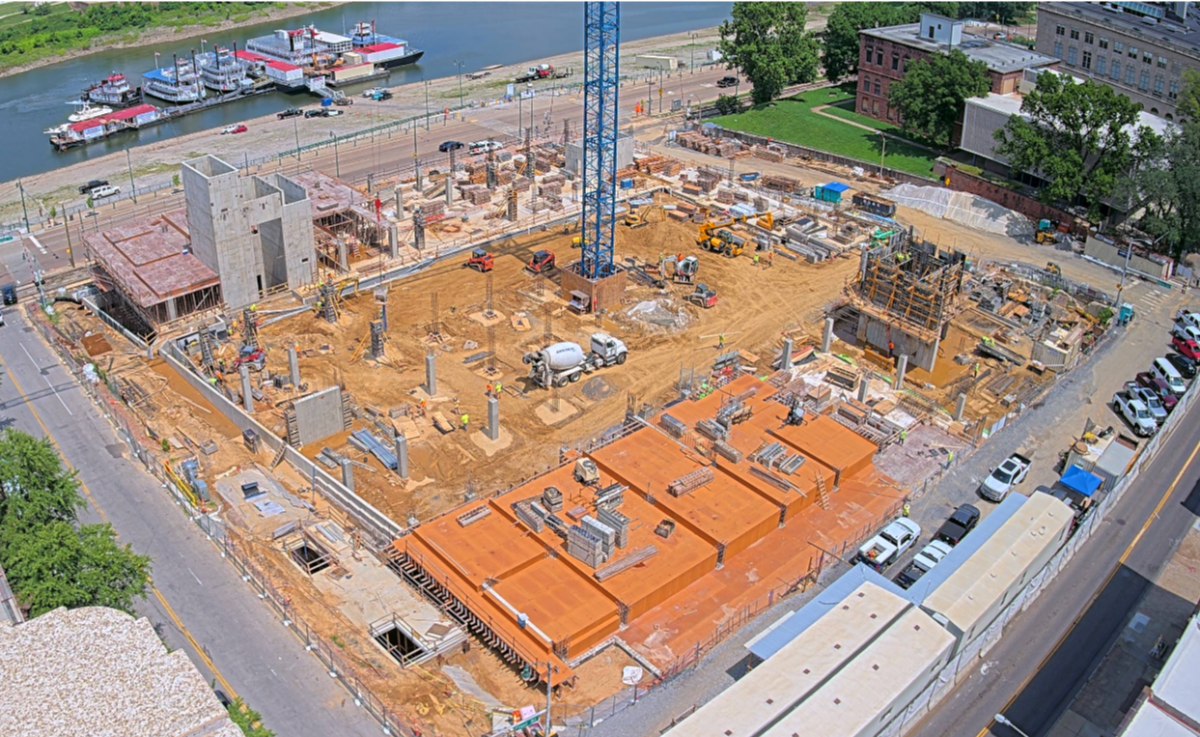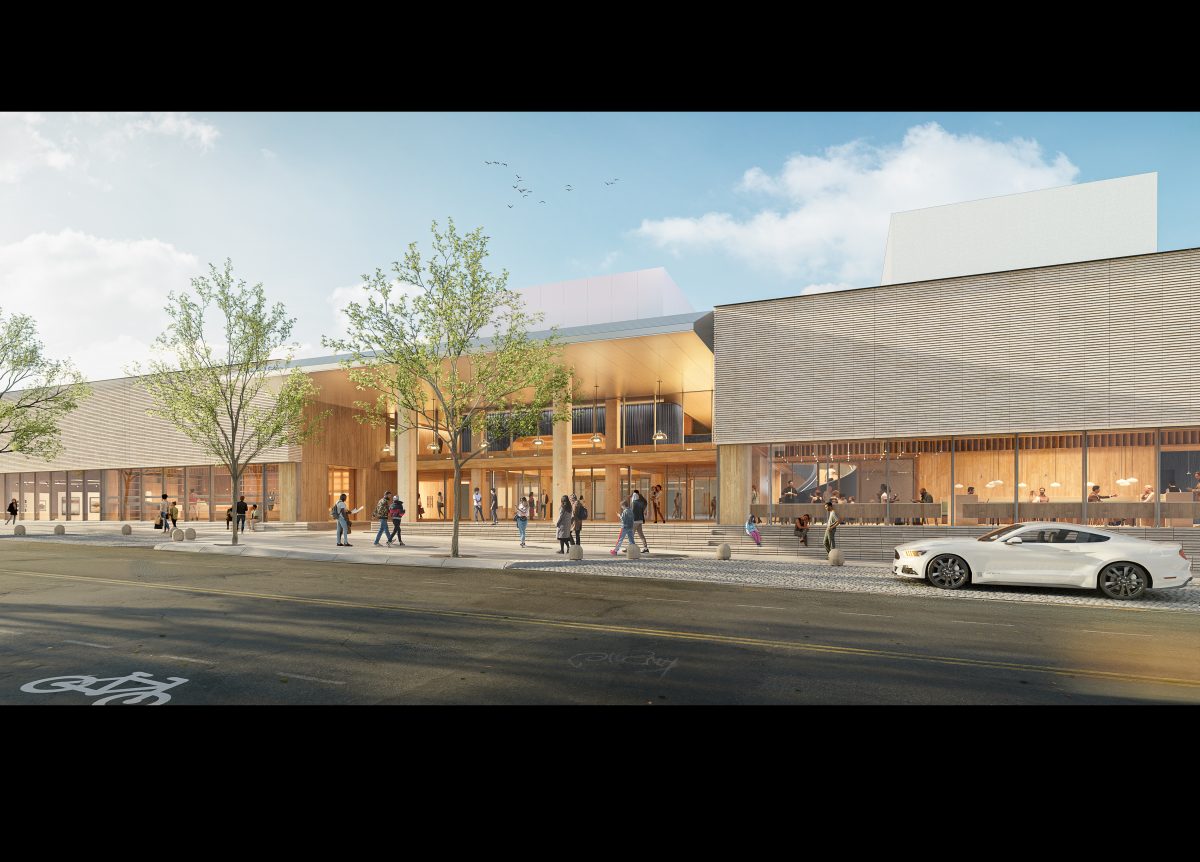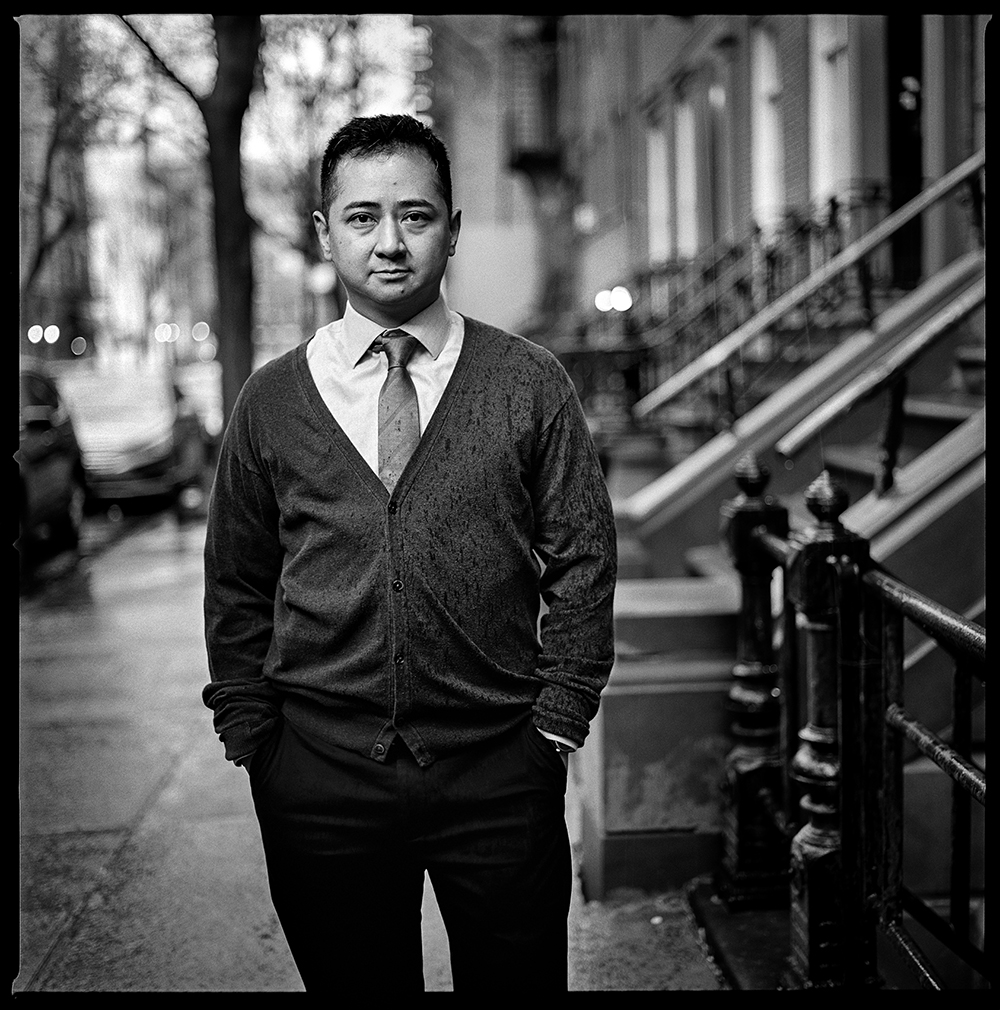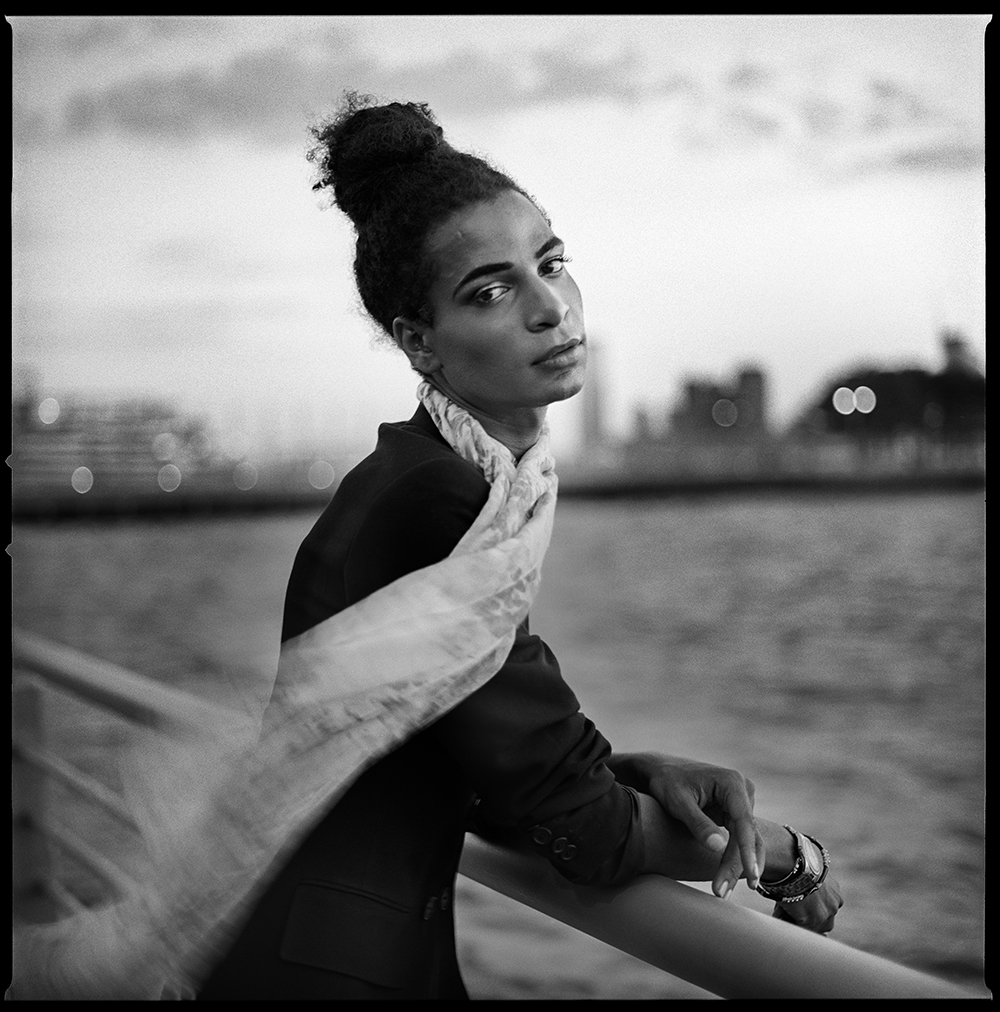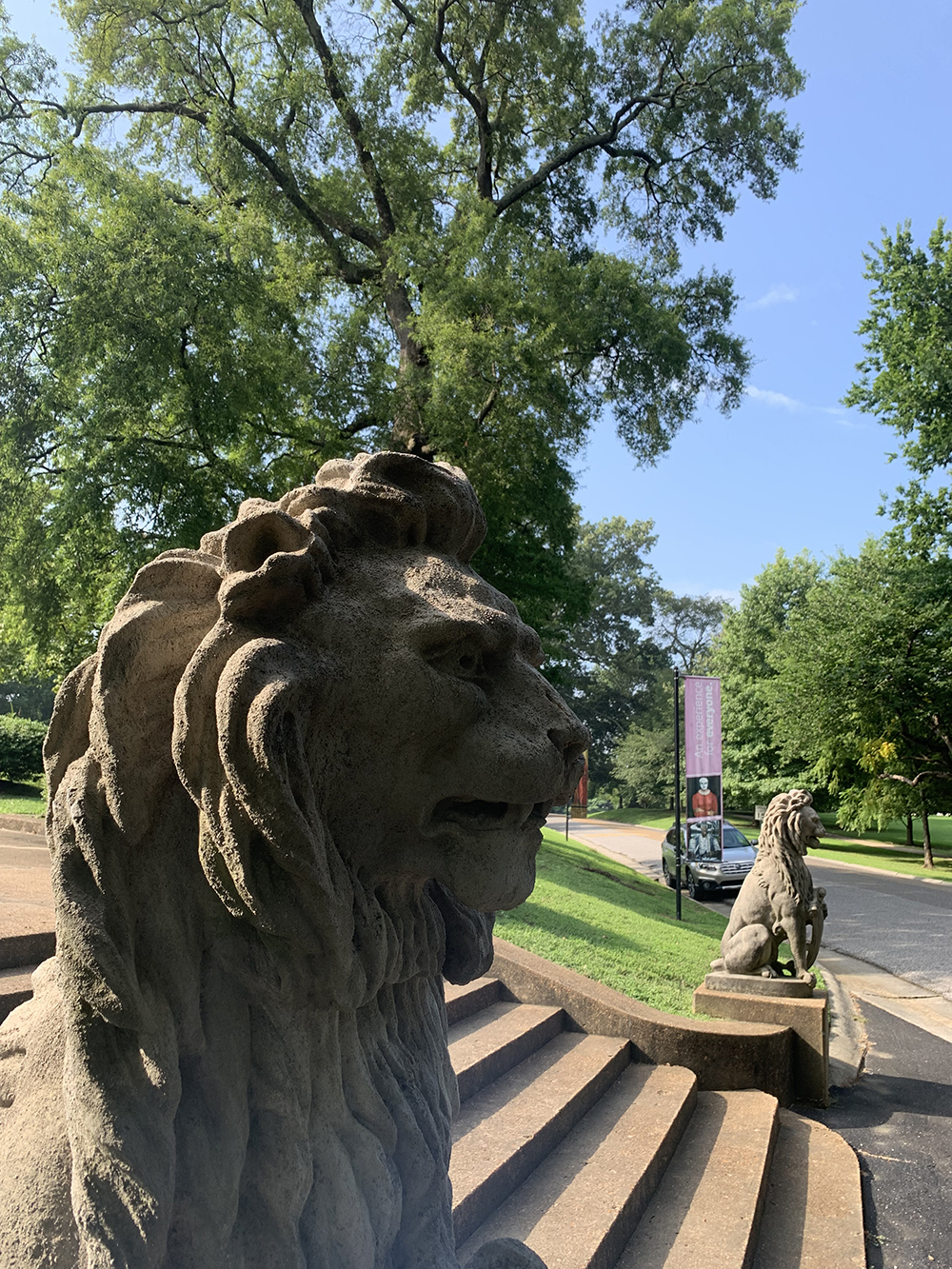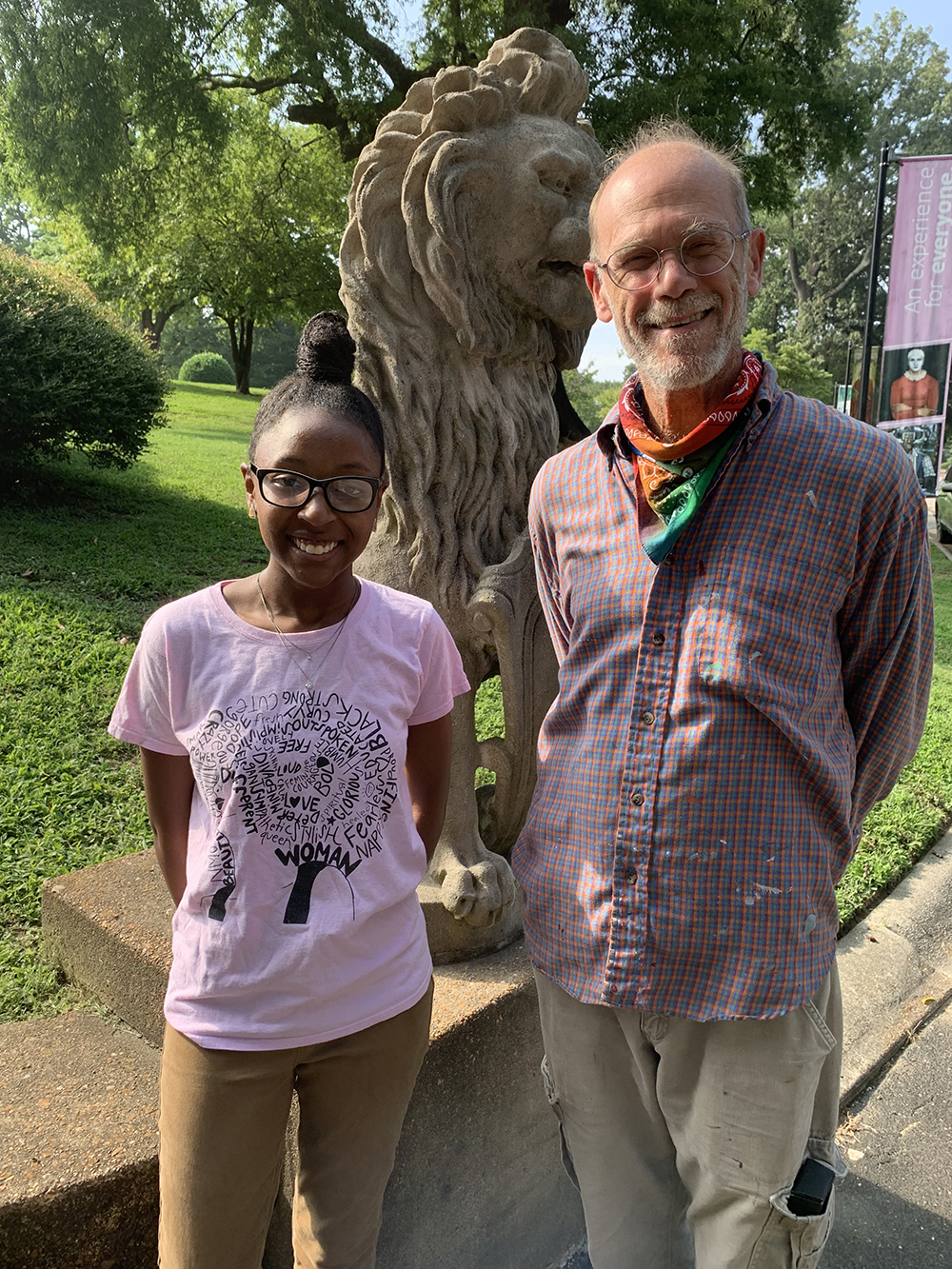As the temperatures are cooling down, the Memphis arts scene is heating up — with exhibitions, performances, and unique experiences. See for yourself in our Fall Arts Guide.
ON DISPLAY
“ABZ2: Artists’ Books, Prints, and Zines”
Corkey Sinks’ collection spotlights contemporary approaches to print media.
Beverly + Sam Ross Gallery, through Oct. 4
“Dear Grandmother”
Heather Howle explores themes of nostalgia and familial connection.
ANF Architects, through Oct. 17
“Troubling the Line: New Dimensions in Drawing”
The works of Melissa Dunn, Terri Jones, Paula Kovarik, Mary Reid Kelley, and Patrick Kelley complicate the idea of drawing.
Clough-Hanson Gallery, through Nov. 9
“All Rise: Memphis Bar Association at 150”
Through arresting objects and powerful images, the exhibition showcases the Memphis Bar Association’s historical significance and continuing relevance.
Museum of Science & History, through Nov. 10
“Bracelets, Bangles, & Cuffs”
This collection of contemporary bracelets reveals the wide-ranging creativity of artists working in the jewelry form between 1948 and today.
Metal Museum, through Nov. 17
“The 6 Points Artists”
This exhibition features Sharon Havelka, Mary Jo Karimnia, Paula Kovarik, Carrol McTyre, Jennifer Sargent, and Mary K VanGieson.
Bornblum Library, Southwest Tennessee Community College, through Nov. 27
“Beyond the Surface: The Art of Handmade Paper”
Handmade paper creations explore the shape-shifting quality of paper.
Memphis Brooks Museum of Art, through Dec. 15
“Andrea Morales: Roll Down Like Water”
Andrea Morales’ first solo museum show features 65 photographs spanning her decade of photojournalism in Memphis and the Mid-South.
Memphis Brooks Museum of Art, through January
“A Hidden Culture”
Master Metalsmith Preston Jackson who gives voice to those overlooked in the history books.
Metal Museum, through Jan. 26
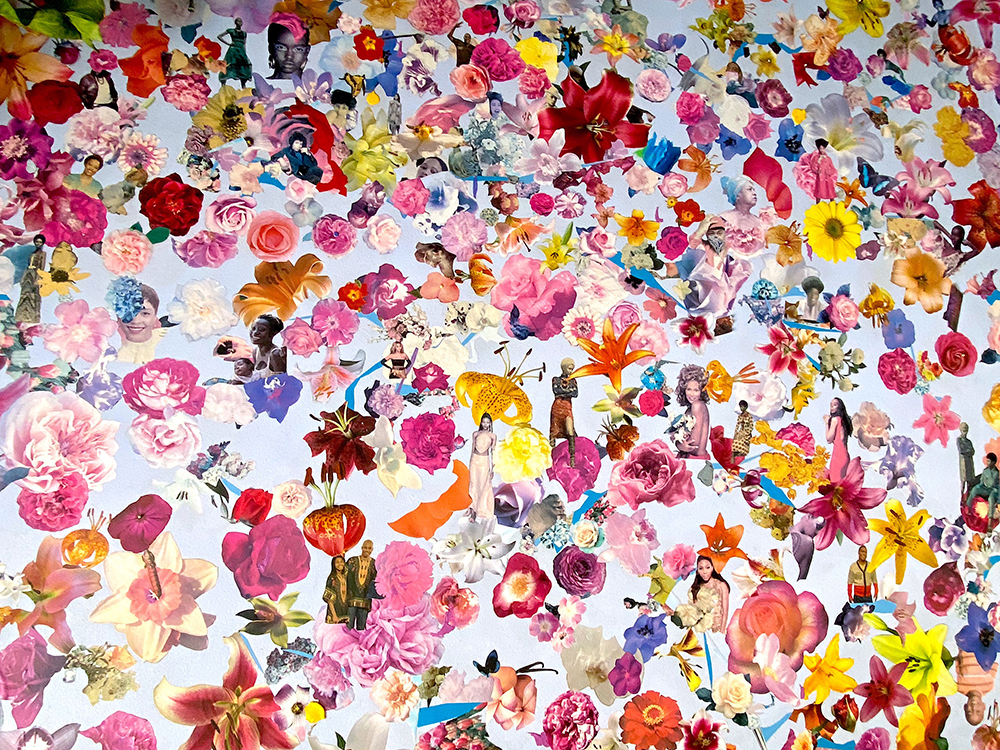
“ANA•LOG”
Lester Merriweather examines the concept of agency over Black visualization within American popular culture.
Crosstown Arts, fall
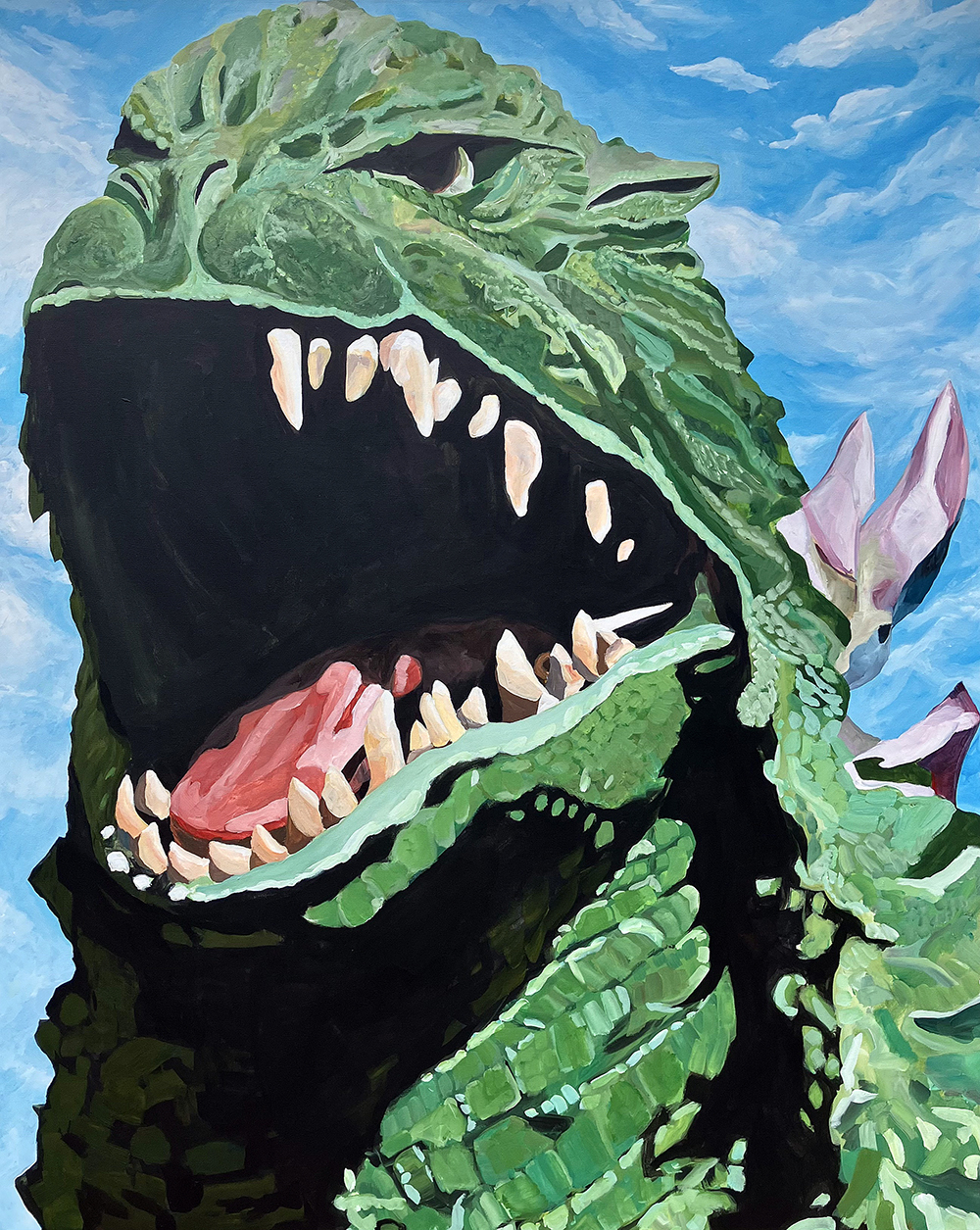
“Size Matters”
Alex Paulus’ current series focuses on the juxtaposition of small figures within expansive landscapes.
Crosstown Arts, fall
“Still”
Michelle Fair’s latest works delve into the process of painting.
Crosstown Arts, fall
“Chromatic”
This exhibit merges explores the two worlds of sounds and color in a synergistic full-bodied experience.
Arrow Creative, October 3, 5:30-7:30 p.m.
“Two Rivers”
Huger Foote captures the moments when day slowly turns to night from Memphis and the Mississippi Delta to the Hudson River Valley.
David Lusk Gallery, Oct. 8-Nov. 16
“I Saw the Light in Your Eyes”
Ceramic sculptors Renata Cassiano Alvarez and Anthony Sonnenberg work through complex ideas of identity through abstraction.
Sheet Cake Gallery, Oct. 12-Nov. 23
“Our Love Is a Shady Garden”
Yanira Vissepó studies the ecosystems between her birthplace in Puerto Rico and adopted home in Tennessee.
Sheet Cake Gallery, Oct. 12-Nov. 23
MadameFraankie
Works by MadameFraankie.
Beverly + Sam Ross Gallery, October 21-December 8
“2024 Accessions to the Permanent Collection”
This exhibition celebrations the more than 170 pieces added to the Metal Museum’s permanent collection.
Metal Museum, November 27-November 2, 2025
ON STAGE
Concerts in the Grove
GPAC presents some of the best musicians in the area in a park-like setting.
The Grove at Germantown Performing Arts Center, select Thursdays, 6:30 p.m.
Sounds of Memphis
Each week, a new Memphis powerhouse presents a unique concert — from the Handorf Company Arts of Opera Memphis to YOBREEZYE.
Memphis Brooks Museum of Art, Thursdays, 6 p.m.
The 8th Annual Free Shout-Out Shakespeare Series: The Comedy of Errors
This 90-minute, madcap romp is performed outdoors throughout Memphis.
Various locations and dates, through Oct. 20
De Aquí y de Allá
Accompany the courageous Don Quixote of La Mancha and his trusty sidekick, Sancho Panza, on an adventure full of fun, music, dance, culture and more.
Orpheum Theatre, October 4-5
Paradise Blue
This dynamic and musically infused drama shines light on the challenges of building a better future on the foundation of what our predecessors have left us.
Hattiloo Theatre, through October 6
Girl from the North Country
The Tony Award-winning musical reimagines Bob Dylan’s songs into a story about a group of wayward travelers.
Orpheum Theatre, Oct.8-13
The Mousetrap
Theatre Memphis presents this murder mystery.
Theatre Memphis, Oct. 11-27
Lizzie: The Lizzie Borden Musical
New Moon Theatre’s Lizzie is American mythology set to a blistering rock score.
TheatreWorks@The Square, October 18-November 3
The Smell of the Kill
This tantalizing dark comedy has malicious housewives and miserable husbands.
Germantown Community Theatre, Oct. 18-Nov. 3
Amadeus: The Music and the Myth
Opera Memphis explores Mozart through the lens of music from the award-winning movie Amadeus.
Cannon Center for the Performing Arts, Oct. 19, 7:30 p.m.
Michael Feinstein featuring the Carnegie Hall Ensemble
Michael Feinstein pays a heartfelt tribute to the legendary Tony Bennett.
Germantown Performing Arts Center, Oct. 19, 8 p.m.
Dracula
Ballet Memphis’ original production builds from Bram Stoker’s novel.
Orpheum Theatre, Oct. 25-27

Firebird
Kevin Thomas boldly reimagines The Firebird.
Cannon Center for the Performing Arts, Oct. 25-27
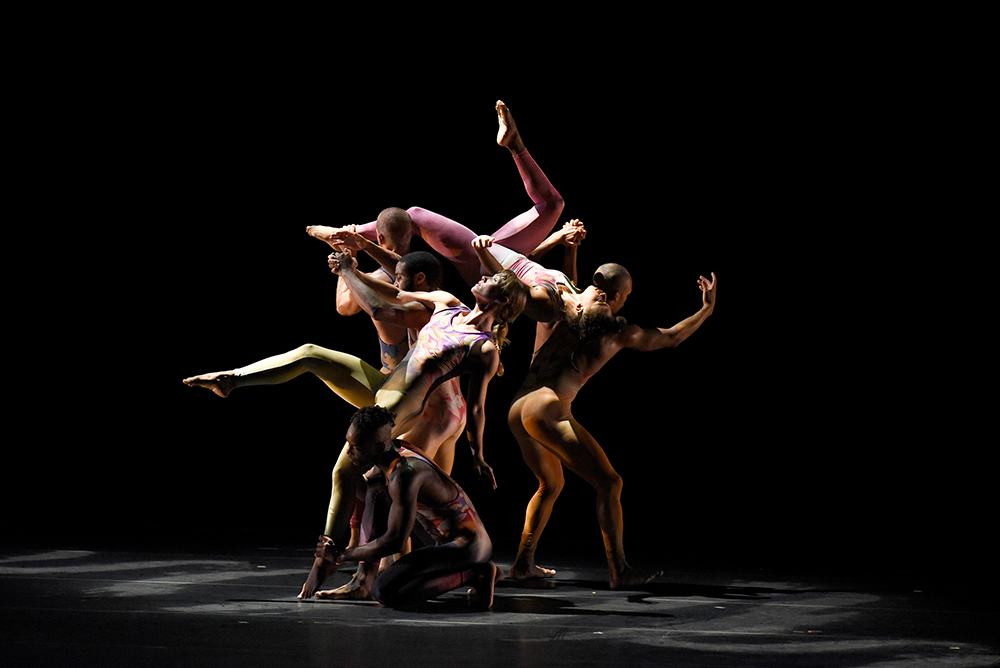
Pilobolus re:Creation
Imagination knows no limits with this experimental dance company.
Germantown Performing Arts Center, Oct. 26, 8 p.m.
Variations on a Theme: The Tell-Tale Heart & Other Tales to Terrify
Opera Memphis, in collaboration with Iris Collective, presents these evenings of music and one-act operas.
Opera Memphis Headquarters, Oct. 26, 7:30 p.m. | Oct. 27, 3 p.m.
Rumpelstiltskin
A young girl is locked away until she spins straw into gold.
Bartlett Performing Arts & Conference Center, Oct. 26, 2 p.m.
Moulin Rouge! The Musical
Baz Luhrmann’s revolutionary film comes to life.
Orpheum Theatre, Oct. 29-Nov.3
The Three Bs: Bach, Brahms, and Beethoven
Memphis Symphony Orchestra presents.
Crosstown Theater, Nov. 1, 6:30 p.m. | Scheidt Family Performing Arts Center, Nov. 3, 2:30 p.m.
Iris Collective Orchestra: Transformations
Memphis-native Randall Goosby and conductor and Iris founder Michael Stern will be joined by the Germantown Youth Symphony.
Germantown Performing Arts Center, Nov. 2, 7:30 p.m.
Taikoproject
Taikoproject traces the history and lore of the ancient Japanese drums.
Buckman Performing Arts Center, Nov. 7, 7 p.m.
The Orchestra Unplugged: Leonard Bernstein
Music director Robert Moody of the Memphis Symphony Orchestra guides audiences through the life and legacy of the American Maestro.
Halloran Centre, Nov. 8, 7:30 p.m.
Junie B. Jones: Toothless Wonder
This family-friendly show takes audiences on a humorous journey of growing up with Junie B. Jones.
The Circuit Playhouse, Nov. 8-Dec. 22
Parallel Lives
Two actresses play men and women struggling through the common rituals of modernity.
Theatre Memphis, Nov. 8-23
The Wizard of Oz
Dorothy isn’t in Kansas anymore.
Playhouse on the Square, Nov. 15-Dec. 22
The Rake’s Progress
Opera Memphis presents Igor Stravinsky’s neoclassical opera.
Scheidt Family Performing Arts Center, Nov. 22, 7:30 p.m. | Nov. 24, 3 p.m.
NutRemix
New Ballet Ensemble sets The Nutcracker on Memphis’ iconic Beale Street.
Cannon Center for the Performing Arts, Nov. 23-24
Peter Pan
This high-flying musical comes to Memphis.
Orpheum Theatre, Nov. 26-Dec. 1
Who’s Holiday
Cindy Lou Who returns in this riotously funny and heartwarming adults-only comedy.
Circuit Playhouse, Nov. 22-Dec. 22
A Motown Christmas
Celebrate the holiday season with this musical of all your favorite Motown tunes.
Hattiloo Theatre, Nov. 22-Dec. 22
Twelfth Night
Shakespeare’s most charming comedy finds itself on the Tabor Stage.
Tennessee Shakespeare Company, Dec. 6-22
A Christmas Carol ’24
Theatre Memphis presents this holiday classic.
Theatre Memphis, December 6-23
Bright Star
Steve Martin and Edie Brickell’s bluegrass musical tells a story of love and redemption in 1920s and ’40s North Carolina.
Bartlett Performing Arts & Conference Center, Dec. 6-8
Tía Pancha
Tía Pancha is Cazateatro’s bilingual adaptation of the classic A Christmas Carol but with a Latin and female twist.
TheatreWorks@The Evergreen, Dec. 6-14
A Charlie Brown Christmas: Live on Stage
The whole family can enjoy this adaptation of Charles M. Schulz’s timeless story.
Orpheum Theatre, Dec. 7, 2 p.m., 5 p.m., 7:30 p.m.
The Nutcracker
Ballet Memphis’ production of this holiday classic returns.
Orpheum Theatre, Dec. 13-15
AROUND TOWN
Art Club
The Brooks’ Art Club with Mallory Sharp gives participants an in-depth look at a different work of art each month.
Memphis Brooks Museum of Art, monthly
Appetite for the Arts
Enjoy a picnic and/or food truck fare while feasting your eyes on music and dance films.
The Grove at Germantown Performing Arts Center, Wednesdays in October, 11 a.m.-1:30 p.m.
Super Saturdays
Enjoy free drop-in art making workshops for families and free admission to the Brooks.
Memphis Brooks Museum of Art, Saturdays, 10:30 a.m.-noon
Free Family Day
On the second Saturday of the month, the Stax has live music, outdoors, food trucks, games and activities, arts and crafts for children, and free admission to the entire museum.
Stax Museum of American Soul Music, second Saturdays of the month, 1-5 p.m.
Artoberfest
Off the Walls Arts showcases Memphis artists and musicians for a day of music, vendors, a costume contest, activities, and fun.
Off the Walls Arts, Oct. 5, 2-10 p.m.
V&E Greenline Artwalk 2024
Meet and shop from local artists, and enjoy music, entertainment, children’s activities, and artist demonstrations.
V&E Greenline, Oct. 7, 11 a.m.-5 p.m.
Paint Memphis
A hundred or so artists will be painting murals all day long and it’s a spectacle to behold.
Willet and Lamar, October 12, noon-7 p.m.
Come as Thou Art
Guests will don their most imaginative attire, either inspired by the night’s theme — the world of Tim Burton — or the spirit of a designer. The evening will be capped off with a fashion show by Sonin Lee.
Memphis Brooks Museum of Art, Oct. 18, 8 p.m.
Art on Fire
Enjoy tastings from local restaurants, live music, thrilling fire dancers, and a vibrant art sale — all set around a roaring bonfire.
Dixon Gallery & Gardens, Oct. 19, 7-11 p.m.
Dracula Party
Celebrate Ballet Memphis’ reprise of Dracula and help raise critical funds to support its mission with a Halloween party where you can party like a vampire.
Mollie Fontaine Lounge, October 19, 7:30-10:30 p.m.
Repair Days
Bring your metal items to have them restored their former glory at the Metal Museum’s largest fundraiser, which also includes the Dinner + Auction and Family Fun Day, where visitors can participate in hands-on activities, explore the galleries, and watch metalsmith demonstrations.
Metal Museum, Oct. 17-20
RiverArtsFest
The region’s largest and longest running fine arts festival showcasing works from 200+ participating local and national artists returns with an artist market, artists-at-work demonstration station, hands-on artist station, performances, and plenty of food and beverages.
Riverside Drive, Oct. 20, 10 a.m.-5 p.m.
28th Annual Quilt & Fiber Arts Show and Sale
View around 100 antique, vintage, and modern quilts, plus meet with vendors and demonstrators and see a new special exhibit.
Davies Manor Historic Site, November 1-3, 10 a.m.-4 p.m.
The Orpheum Soiree
Enjoy an evening including glittering entertainment, live auction, specialty cocktails, exciting eats, and fun surprises.
Orpheum Theatre, November 15, 7 p.m.
…
ARTSassist
In August, ARTSmemphis announced the inaugural distribution of ARTSassist grants to 22 individual artists, providing these artists in dance and visual arts an unrestricted $5,000. This makes it the only unrestricted grant program supporting individual artists in Shelby County.
The program comes as an expansion of a pre-pandemic grant program for visual artists, known as ArtsAccelerator. As ARTSmemphis CEO and president Elizabeth Rouse says, “About 10 years ago, thanks to some local artists in the community who asked questions of us, we began a grant program to support visual artists. … We started with visual artists because at the time, they had fewer other networks of support and fewer other opportunities to be hired.


“But that really, thankfully, put us in a position to launch an artist emergency fund for individual artists in 2020 as artists of all different types immediately lost work during the pandemic. And we supported about 800 artists during the pandemic with emergency funding totaling almost a million, right around $900,000. From 2020 through 2023, we focused on emergency and recovery funding, so coming out of 2023 we wanted to reintroduce an unrestricted grant for artists and expand it rather extensively.”
That meant bringing on an artist advisory committee made up of Memphis artists to make sure artists’ needs were met, and out-of-town jurors to select the grantees without local bias. That also meant, in addition to supporting the 22 selected grantees, partnering with Indie Memphis to support a filmmaker through Indie Memphis’ Black Creators Forum and partnering with Music Export Memphis (MEM) to support three musicians through its Ambassador Access program. “It was a way for us to be efficient and not create something new, but to support and complement,” Rouse says. “We hope, long-term, to be supporting even more types of artists. But it makes sense, just based on the makeup of artists in our community, that we start out with visual, dance, music, and film.”
This first cohort will use their grants for a variety of reasons, Rouse says. Therrious Davis, an illustrator, comic book artist, and occasional muralist, has used his grant money to buy a new computer and tablet. “I had this laptop for close to 10 years now,” Davis says. “It was starting to show signs of its age.”
Davis has been developing a comic project called Exodus of Love, premised on the question, ‘What if Cupid didn’t know what love was?’ But not having reliable or capable equipment has been holding him back from making headway. “The goal will be to make more videos following the development of the comic book project and to give people a chance to follow it from the ground up.” (You can follow Davis’ progress on Instagram @therrothekid.)
Meanwhile, choreographer Dorian Rhea plans to use his grant to fund future movement-based programming at the Benjamin L. Hooks Central Library. “It’s going to be jazz. It’s going to be social dance, known as hip-hop styles, accompanied by excerpts and texts to contextualize the history,” Rhea says. The classes will be for young kids and their parents, an experience that Rhea, as a new dad himself, hopes will “sow the seeds for much more later down the road.”
Rhea will also use his grant to attain a technique certification in Giordano dance, a style of jazz that originated in Chicago. “I’m hoping that with bringing that style to Memphis, we elevate the cultural exchange that I think is already taking place [between Chicago and Memphis],” he says. “Knowledge is power. Art is all about telling a story and communicating the narrative, sharing an experience, and so as someone who believes in art activism — using arts as a vehicle for creating change and sparking the catalyst for evolution, growth, progress — the more grounded my work is in the history of those who’ve come before, the richer I can articulate lessons.”
No matter their personal goal, Rouse says, “We know how important it is to have a strong community of artists and to be a city that is a city of choice for artists. They’re just so critical to our culture and our economy, so … we intend for this to be an annual grant.”
On Monday, in alignment with this goal, ARTSmemphis, in partnership with Music Export Memphis, also announced a new, first-ever Artist Emergency Fund for local artists, which will support artists in times of unexpected and catastrophic emergency. For more information on both of these grants, visit artsmemphis.org.
…
Andrea Morales: “Roll Down Like Water”
Andrea Morales has been making photographs since she was a child, and yes, “making photographs” is the right phrase here. Not taking photographs, capturing, or shooting. For Morales, these words are too aggressive to describe a process that is about building trust and intimacy between the photographer and the photographed individuals, or, as Morales calls them, her collaborators.
She’s been working in Memphis as a photojournalist for a decade now, making photographs of the community. You probably recognize her name from her work as the visuals director at MLK50: Justice Through Journalism, but she’s also been featured in The Atlantic, The Wall Street Journal, Rolling Stone, and TIME Magazine, among many others. Now, to add to her impressive resume, the Memphis Brooks Museum of Art has opened an exhibit of 65 of her photographs of Memphis and the surrounding region, titled “Roll Down Like Water.”

Taking its name from Dr. Martin Luther King Jr.’s final speech in Memphis, in which he said, “Let justice roll down like waters and righteousness like a mighty stream,” the exhibit, says its curator Rosamund Garrett, is “a portrait of America through Memphis.”
“There are some tremendously famous photographers from this area,” Garrett says, “but I really feel that Andrea looks at things through a very fresh lens, and she looks at this region very directly, very earnestly, in a way that still allows the magic of this place to come through.”
But in this exhibit, not appearing in a publication with someone else’s byline, a headline she didn’t choose, or quotes she didn’t pull, the photos can stand alone. “It does feel like something’s being restored, I guess,” Morales says. “I’m struggling with identifying exactly what, but it feels like something’s restored. It’s like back to that feeling of the moment [of making the photo] because you have that moment and then you kind of have to tuck it away because this photo has to exist in this one context [of an article]. But this is all existing in the context of me and Memphis right now.”
“Roll Down Like Water,” Memphis Brooks Museum of Art, on display through January 2025.
…
We All We Got
Binghampton is putting on a play. The actors are young and old, some seasoned and many freshly-minted to the spotlight. Kids at Carpenter Art Garden are building scenic elements, and community members are tuning their instruments for a show their stories helped create.
It all started over a year ago when the Orpheum Theatre Group launched its Neighborhood Play Program. After working with the Refugee Empowerment Program in Binghampton, making original plays out of participants’ stories, Orpheum staff “realized one of their favorite moments in it was when they got to step out of their story and play the characters that were in other people’s stories,” says Taylor St. John, Orpheum’s director of education and engagement. “There’s something powerful about telling your own story, but there’s also something powerful about participating as a community in a fictional story.”

So came the Neighborhood Play Program, through which the Orpheum partnered with various organizations and formed “story circles” to create a neighborhood play. “For six months or so, we got people in a circle and asked them questions about their community, things that they found beautiful, things that they found challenging,” St. John says.
These stories, in turn, would be the inspiration for the fictional story that playwright Ann Perry Wallace, author of the one-woman play Live Rich Die Poor, would weave. They then presented this fictional story in another round of story circles for feedback.
“I felt like I had a lot of responsibility to deliver something that was representative of what I had heard,” Wallace says. “You are responsible for these stories that have been told, you are responsible for putting out this image of the people, and so that is a weight that I carry with honor and take seriously. There’s nuance. And so I’m having to hold all of that in a way that gives dignity where dignity is due and have to show the complex struggles where they are present. It is a dynamic place, and I hope for people to see the intricacies, or just a snapshot of those intricacies come out.”
As for the plot of the play, titled We All We Got, St. John says, “The story itself centers on two young Black girls living in the neighborhood, one from a generational home and one living in the apartments who’s a refugee, and how they navigate the world and encounter all of the various characters of Binghampton.”
The hope, both St. John and Wallace point out, is to highlight the different experiences within Binghampton. “It’s one of the most diverse neighborhoods in Memphis,” St. John says. “There’s over 20 languages spoken there, and so we really tried to honor the stories that do not otherwise get highlighted.”
With all those differences, St. John adds, “It’s been exciting, in the last couple weeks, to see all those people from all those different groups that do different things and have very different beliefs and sometimes cultures now all be in the same room, and we’re all working on this thing together, and it just feels like a great exercise in community.
“We think it’s so important that the people in Binghampton can hopefully see themselves in this play, or see reflections of their ideas and other stories in this play. But it’s also really important that as a city, we’re able to come together [by seeing the play].”
The play is set to premiere in November, with community members acting both in the scenes and behind the scenes. Already, just watching rehearsals has Wallace “thrilled.” “You are seeing people who have pride in the neighborhood come out to be a part of it and really stretch themselves in creative and artistic ways,” she says. “Not all of them are normally doing this in their day-to-day life, and then we do have some actors who are in it, but particularly the community members, them showing up and performing best, to me, that’s pride, and that’s dedication, and that’s belief in their community.”
All three performances, which will take place at First Baptist Broad Church in Binghampton, will be free to attend, and Backbeat Tours will provide free transportation at designated locations.

